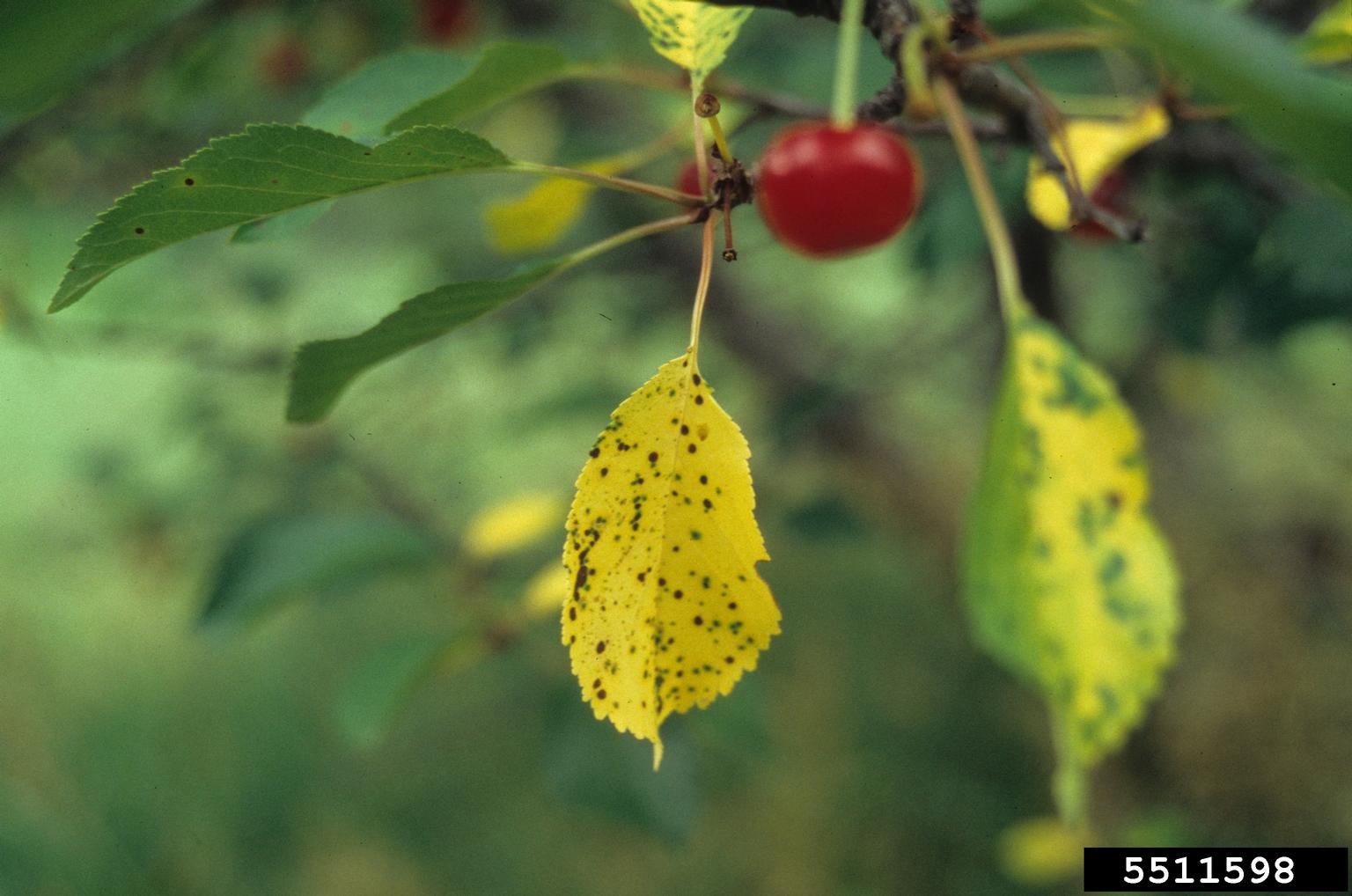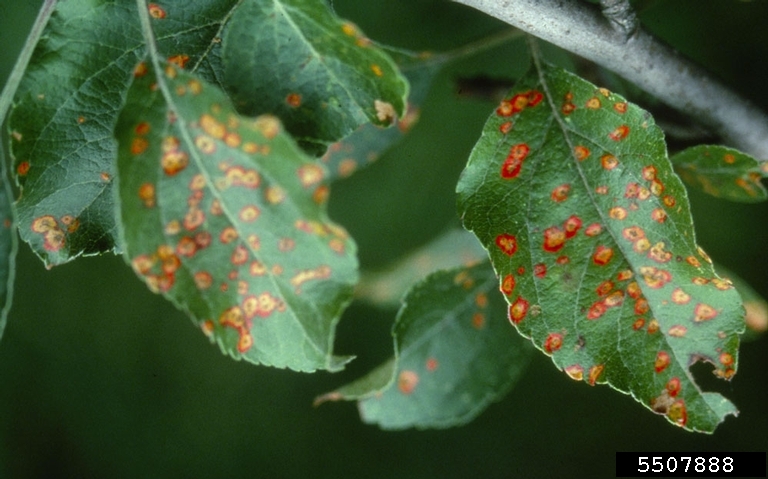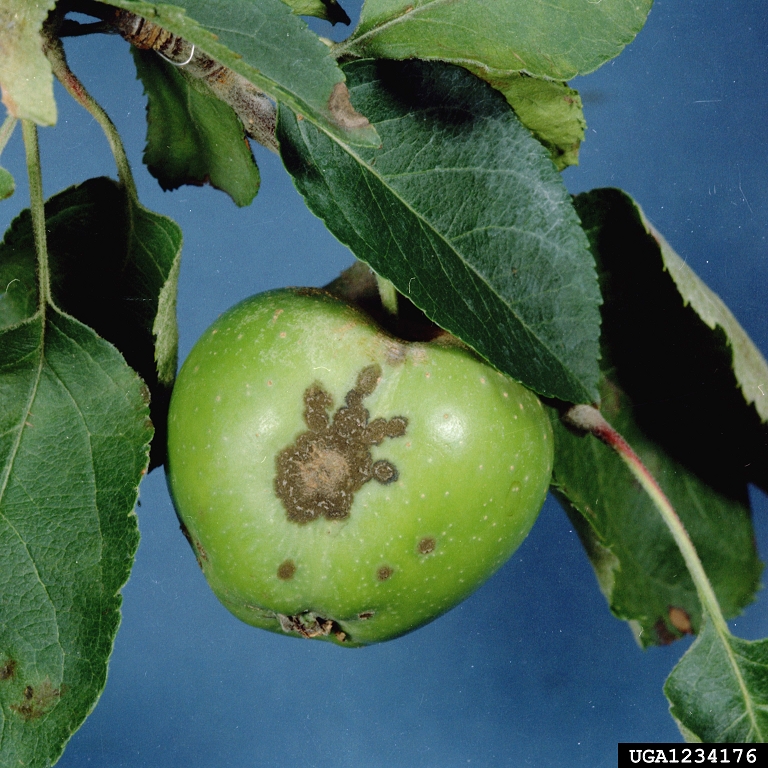.jpg)
Fruit trees will soon be blooming, marking the beginning of another growing season. Many diseases become active during blooming, so it’s time to prepare to protect your trees and ensure a good harvest.
 Brown Rot
Brown Rot
After harvesting, gardeners are often disappointed to find apricot, peach, cherry or plum fruits quickly develop a soft fuzzy brown rot. This is caused by a very common fungal disease aptly named brown rot.
Two major infection periods occur with brown rot, 1) during flowering and 2) several weeks before fruit harvest. During the early spring blossom blight period, flower petals are infected. The disease quickly spreads causing entire flowers to turn brown or black and die. Spring infections are not serious in themselves, but dead infected flowers remain in the tree producing fungal spores which infect stems and twigs causing cankers. They also infect fruits later in the season. If humid or wet conditions occur during fruit ripening, brown rot outbreaks can be severe.
Brown rot fungus overwinters primarily on dried infected fruits from the previous season, called mummies. All rotted fruit and mummies should be collected beneath trees or removed from the branches in fall to reduce disease pressure the following year.
Organic control of this disease includes the following.
- Prune out cankered branches ASAP, if you have not already done so. (Ideal pruning time for stone fruits is late March.)
- Remove and discard any remaining mummies from last year, both on the tree branches or beneath the trees.
- Remove mummies as they appear during the growing season.
- After harvest, immediately cool and refrigerate fruits, or process fruits, to prevent fungal infection from advancing to fruit rot.
If your trees have a history of infection, the first fungicide control application should be made when 25% of flowers are open, followed by two additional applications - 10 days after shuck fall and a final application 10 days later. Applications to prevent the fruit rot disease stage should begin one month before harvest and continue on 7- to 10-day intervals until harvest is complete. Recommended fungicides include captan, myclobutanil, thiophanate-methyl and propiconazole.
Note - shuck fall occurs when papery coverings over the expanding young fruits have split open and fallen from a majority of fruits.
 Cherry Leaf Spot
Cherry Leaf Spot
More severe on sour cherries than sweet cherries, this fungus overwinters on fallen cherry leaves and in the spring produces large numbers of spores from these old leaves. Spores are moved by air currents and rain. In the presence of spring moisture, spores initiate new infections on young leaves.
Symptoms include numerous, tiny purple spots on upper leaf surfaces, which enlarge and die. Affected leaves turn yellow, often with a green halo around the infected spots giving leaves a mottled appearance. Masses of spores appear in dead leaf spots. Infections may also girdle the fruit stems, causing fruit drop. The most serious effect comes from early summer leaf loss, or defoliation, caused by heavy leaf spot infections and can weaken the tree.
Organic control strategy - rake up and destroy last year's infected leaves and fruit debris before new leaves emerge. Copper fungicides are acceptable in many organic production programs and can provide some protection. Use the application timing below.
Preventive fungicides are recommended at petal fall, shuck fall and two weeks later. Recommended fungicides include myclobutanil, thiophanate-methyl and propiconazole.
 Cedar Apple Rust & Apple Scab
Cedar Apple Rust & Apple Scab
Wet spring conditions also favor heavy infections of these two fungal diseases of apple trees. Apple scab overwinters on infected leaves and fruits. Mature fungal spores are released into the air during periods of spring rain and blown to nearby trees. Cedar-apple rust overwinters on its secondary host – juniper. Gelatinous orange fruiting structures develop on junipers during wet spring weather and disperse to susceptible apple hosts.
Spores that land on a leaf or fruit and come in contact with water germinate and cause infection, so disease development is favored by wet, humid weather that prevails from late April through June.
 Symptoms
Symptoms-
Apple scab causes bright yellowish-orange leaf and fruit spots, which often have a band of red or yellow around the outer edge.
-
Cedar-apple rust causes olive to greenish-black leaf spots. Similar cracked, scabby spots appear on the fruits with heavily infected fruits becoming misshapen.
Organic Control Strategies
-
Do not plant eastern red cedar or other junipers within a few hundred yards of a susceptible fruit tree. This will reduce infection rates, but not eliminate it completely.
-
Plant rust and scab resistant apple cultivars, such as Enterprise, Freedom, Liberty, Macfree, Novamac and Priscilla. For a more complete listing, visit Disease Susceptibility of Common Apple Cultivars.
-
Copper fungicide will provide some control.
Effective control using fungicides depends on the timeliness and repetition of applications, and the degree of coverage obtained on both the upper and lower leaf surfaces. Begin applications in spring at bud break and repeat applications as directed by the fungicide label. Typically, 3-4 fungicide applications made 7-14 days apart are required for good control. Recommended fungicides include chlorothalonil, thiophanate-methyl, myclobutanil, mancozeb or propicopnazole.
For a complete spray schedule for all home fruits, refer to the University of Missouri’s publication “Fruit Spray Schedules for the Homeowner” Control application timing is given based on plant growth stage, so the recommendations can easily be interpreted for use by Nebraska growers.
Fungicides mentioned above can be found at your local garden center.
-
Captan: Bonide Captan
-
Chlorothalonil: Daconil, Bonide Fung-onil, Ortho Garden Disease Control
-
Copper: Bonide Liquid Copper Fungicide
-
Thiophanate-methyl: Cleary’s 3336
-
Myclobutanil: Spectracide Immunox
-
Mancozeb: Bonide Mancozeb Flowable with Zinc
-
Propiconazole: Bonide Infuse (Labeled for use on fruit bearing apricot, cherry, nectarine, peach, plum and prune. Can only be used on non-fruit bearing apple trees; those trees from which no fruits will be harvested for a year.)
Always read and follow all label directions and precautions.
Reference to commercial products or trade names is made with the understanding that no discrimination is intended. These products are listed as examples only. No endorsement by the University of Nebraska-Lincoln is implied.
Image credits
- 5558709 - brown rot of peach, Rebecca A. Melanson, Mississippi State University Extension. Bugwood.org.
- 5511598 - cherry leaf spot, Ward Upham, Kansas State University. Bugwood.org.
- 5507888 - cedar apple rust, George Hudler, Cornell University. Bugwood.org.
- 5549186 - apple scab, Penn State Department of Pathology & Environmental Microbiology Archives, Penn State University. Bugwood.org.